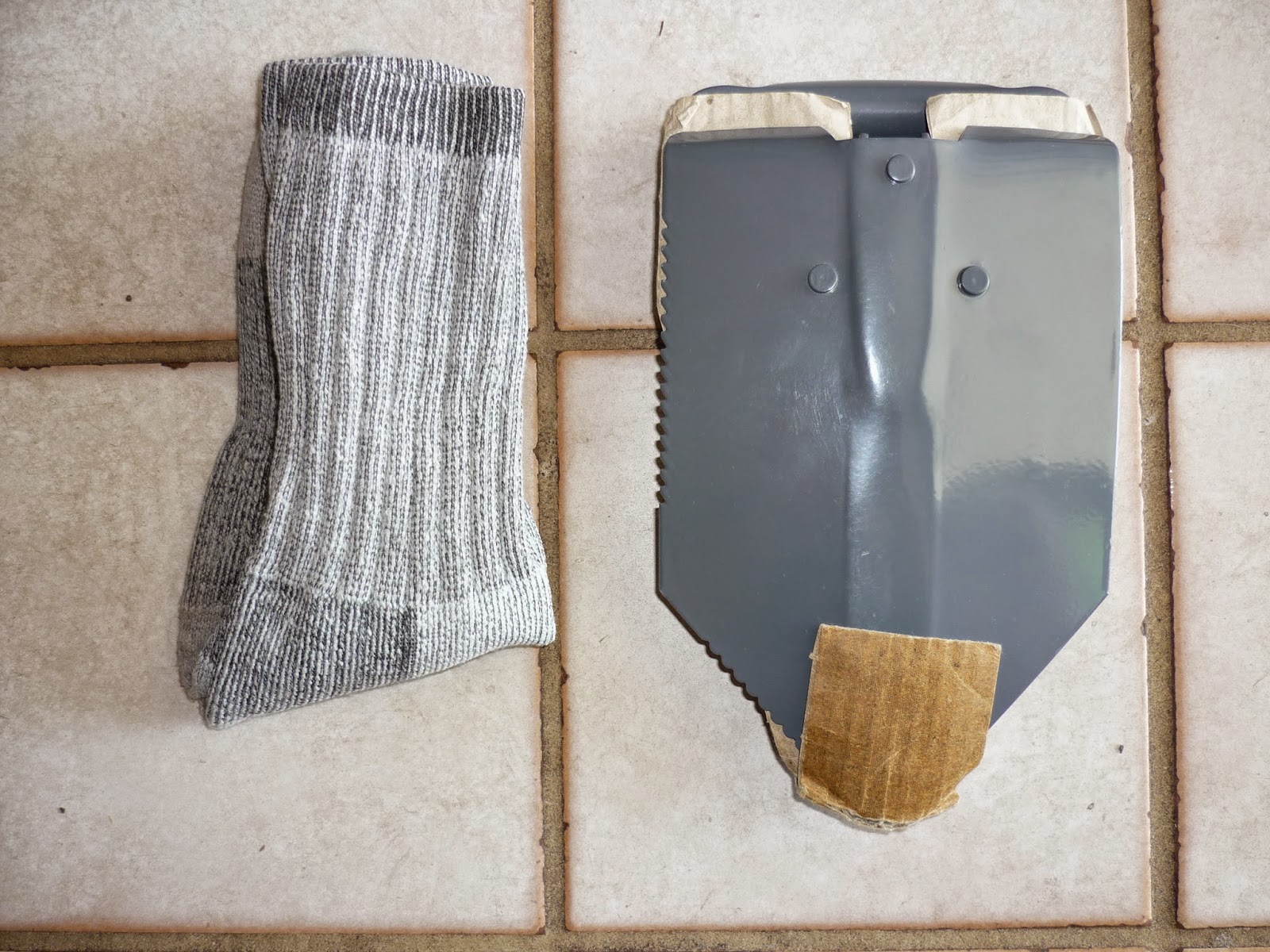 |
Not actually Erin.
& is used with permission.
|
Part 2
Part 3
Part 4
Welcome to Part 5 of what I now think will be a 6-part series. Today I'm going to cover the top part of the main compartment. I'm breaking this section into two pieces because it will be image-heavy, just like the rest of this series.

The very first item once I open the drawstring is a Swiss Alpenflage Poncho. I try to avoid camo in my bug-out gear because I don't want to attract the wrong attention when evacuating, but I went with this for three reasons:
- It's specifically designed to go over a rucksack so that both I and my gear stay dry. I've tried it, and yes, it fits. Just bake sure you're wearing tall boots so that the runoff doesn't soak your lower pants legs.
- Switzerland is a rainy country, and so I trust them to make effective rain gear. I like how it leaves my arms free for doing whatever (and if I want to keep them dry I can just pull them inside), and there are various snaps along the bottom so that I can wear this while riding a horse or bicycle.
- To my utter surprise, the red-brown is exactly the same shade as Florida pine straw. This means it's effective camouflage, period, and while I want to look like a harmless civilian when evacuating there are still times when I might need to hide.
Immediately after the rain cape is a pair of woolen socks (easy to get to in case I need to change socks) and a Coleman Folding Shovel (because heavy things need to kept in the middle-top of the pack and close to my back).
| www.wildbackpacker.com/backpacking-gear/backpacks/how-to-pack-a-backpack/ |
After that, things get a bit messy as I lack the ability to keep things organized and separated, yet easy to access. Suggestions on how best to correct this problem are more than welcome!
Front and center is the Power Pot that I got for Christmas, and nestled inside like Russian dolls (as I demonstrate in this video) is a Solo Pot and Stove combo.
Next to my back is an empty 2-liter hydration bladder, with (hopefully) enough room for it to fit when full. By "hopefully" I mean "I've filled it and had enough room, but I am constantly tinkering with my loadout and I've added some gear since I last tested it and I'm not 100% if everything still fits. I really need to clear my schedule and go camping so I can give everything a proper test."
Here's the rest of the top layer, spread out for easy identification in (roughly) the same position it occupied in the pack.
Clockwise from top:
- Six-Herb Multi-Spice Pack. Has individual compartments for salt, paprika, curry, cayenne, garlic salt, and black pepper, which ought to enable me to eat nearly anything. It's wrapped in a Ziploc bag to prevent spills.
- Stainless steel Mora knife.
- Two large-size garbage bags. I really ought to add some white bags to this, so I'll go do that now.
- Top Ramen, Chicken flavor. Cooks quickly in the Solo Pot and weighs nearly nothing.
- Waterproof box from Lifeline that used to carry first-aid supplies but now has my deck of Edible & Poisonous Plants of the Eastern States recognition cards. Also inside is a backup thumb drive filled with scans of important documents, just in case the one on the outside of my pack is lost or damaged.
- A spatula & ladle taken from a Stanley 1.5 L Prep & Cook set.
- Camouflage mesh from the hunting department of Walmart. Can be used for concealment, or to keep mosquitoes off of me.
- A triangular bandage which ought to be in my first aid kit (which is in the lower section and accessible through the front loading panel) but wouldn't fit.
- A fishing kit I've put together but haven't tested for the same reasons I haven't been camping:
- a Piddly Stik, from December's Apocabox.
- Contents from the Best Glide Emergency Fishing Kit have been added to the plastic tube containing the Piddly Stik.
- a Yo-Yo Fishing Reel from Fisher. I thought I had two of them but I don't know where the second has gone. I need to find it.
- Pro-Knot Fishing Knots card
- (Why so much fishing stuff? I live in Florida, and it's easier to fish than to hunt.)
- Another waterproof box, this time containing Knot Playing Cards.
- More Top Ramen! This time it's beef flavor.
- A flashlight that I got from who-knows-where and is nifty because I can pull on the collar and it turns into a lantern. Great for use at bedtime while camping!
And that's the top half! Next week I'll show you the bottom half, as well as the stuff I'd like to be able to fit into my pack but can't quite make room for.
















